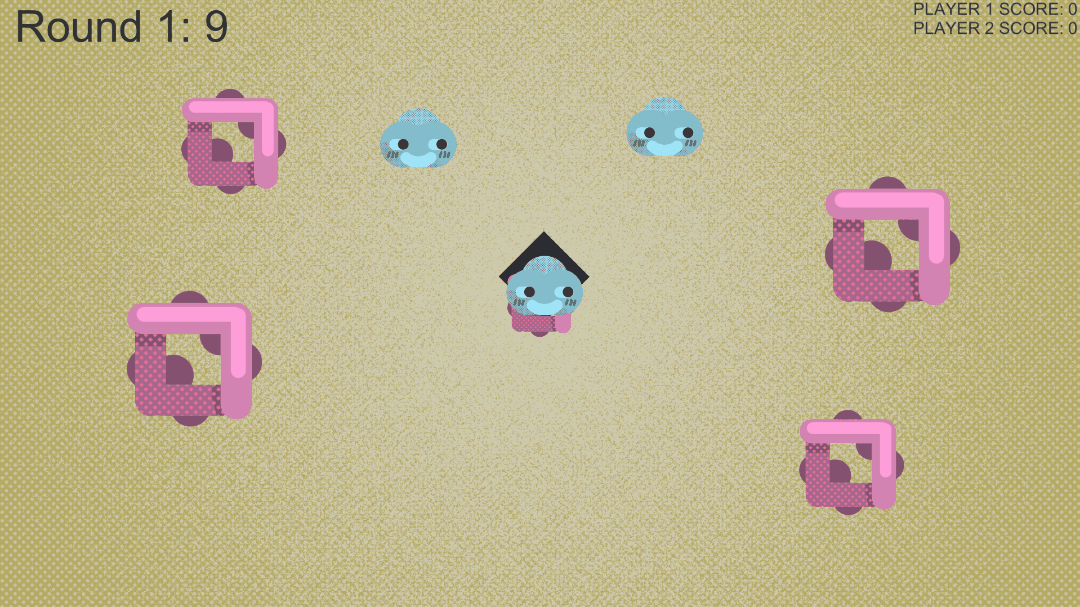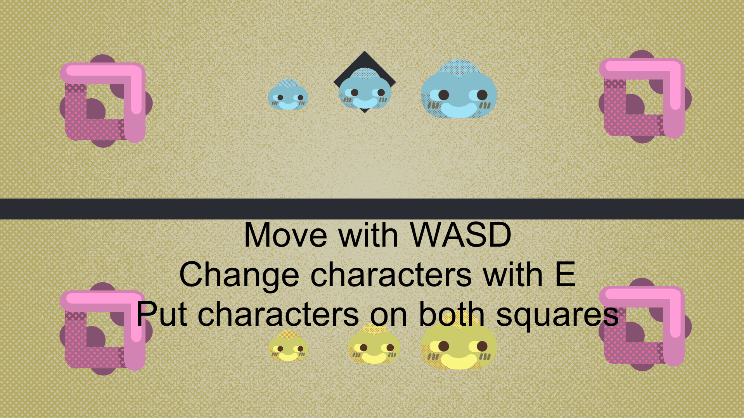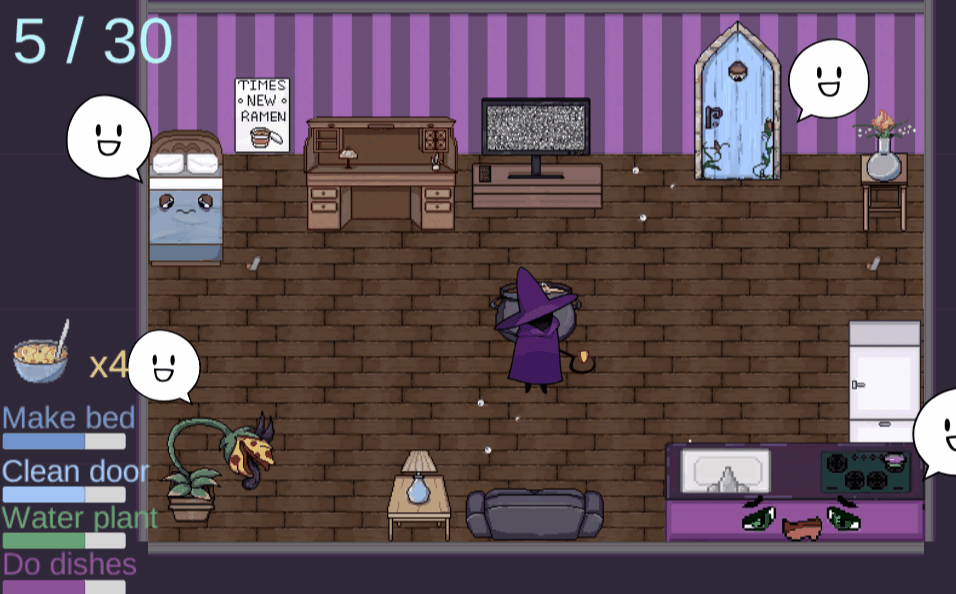PROTOTYPES
Various digital game prototypes from 2019-onwards
Charonwood
2023 - Design, programming, art (solodev) - Unity
Design:
Created for DCJam 2023, Charonwood was a solo jam project developed over a week to create a classic dungeon crawler style game. The game was intended to explore turn-based combat in a open way, drawing inspiration from the movement/combat economy seen in later etrian odyssey titles. Beyond this the main goal for the project was to challenge myself with development and asset creation with all aspects of a game within a short timeframe.
Results and takeaways:
The overall load of the project was significantly heavier than the timeframe allowed and the game ran against scope issues from the start, even while adopting a cult of done mentality to many of the assets, the quality of much of the game suffered and stress management became a large issue. A majority of the feedback came from a simple programming mistake due to stress/time management. Main takeaways are about being careful and honest when it comes to scope and planning to afford time for learning new tools/skills (in this case, music composition) is crucial for a healthy jamming experience.
Intent and design challenge:
The added design challenge was the prompt “duality.” This was interpreted into a coin flip mechanic where the player’s coin cycles between two effects whenever they attack. Enemies also have coins that effect their attacks and players can forcibly swap coins with enemies to explore different movesets. Overall intention was to create something playable beginning to end within the established genre. The Game featured two levels for players to explore through with short narrative segments to bookend. Focuses for the challenge were combat system design and visual style to make a visually unique experience with a quick pace for gameplay.
Don Quixote the ufo tower
2021 - Design, programming, art - Unity
Design:
Inspired by a chapter of Don Quixote (18), the aesthetic of play was for players to attempt to control themselves to prevent a chaotic situation and outcome. The player’s main body would turn on targetting every couple of seconds at regular intervals, establishing nearby cows as targets for their turrets to automatically attack. Cows would attack the player if they were shot at or near a cow that was tipped by the players turrets. Cows would spawn constantly, making it more difficult to not target them over time. The game became an endurance based system where players would try to last as long as possible.
Takeaways:
Its crucial to consider how players will be onboarded while designing a game, especially a new or strange player controller like the rotation controls. Players need a safe opportunity to understand how they control and their goal in the game before it starts challenging them and this can apply to a game’s underlying systems as well (such as the cow ecosystem).
Intent and design challenge:
The main goal for this prototype was to practice designing with behaviour trees and design around an ecosystem the player would have to interact with (in this case cows that roam and attack when provoked). I additionally wanted to experiment with an uncoventional player controller like the layered rotating tower controlled with QWD and POK.
Results:
I think the interaction with the cows around the player proved interesting and engaging, but needs more signposting and onboarding to convey whats happening to players in a more concrete manner. I think the play aesthetic of trying to control one’s own chaos was successful but things got out of hand a bit too fast for players to understand their goal and controls.
Hide team versus
2020 - Design, programming, art - Unity
Design:
A multiplayer game where players fight for control of scorezones without being able to see each other. Players control a team of three characters they switch between and compete for the highest score after 5 rounds. Characters would grow and become slower as they accumulated score though, making it harder for them to push an opponent off a scorezone but taking up more space on it. Each player had a seperate screen but shared a keyboard and had to bump into one another to explore what the other player was doing.
Results:
While I think the overall experience was close to the intention, it was still a bit shy of the mark and more time for juice and iterations would help. The game feels a bit simple and seems like its lacking a mechanical hook in the player’s moveset to really explore the idea.
There was also a dominant strategy discovered where players would leave two characters on scorezones and leave a third small and fast to push opponents around. I thought the strategy was interesting where players would use their larger pieces as “sensors” but the management play aesthetic was a bit tedious over the rounds and resulted in lower scores for both players.
I think the onboarding scene when the game was first opened was successful in establishing a goal and a control scheme but didn’t prepare for the main interaction of bumping around for the other player.
My main takeaway is to establish an aesthetic of play early, but expand on it in the player controller itself and not just the underlying systems to properly deliver on it.
Intent and design challenge:
The main design challenge was in multiplayer game design and designing for limited information on each player’s part. I wanted to play on the idea of bumping around trying to feel your environment in the dark but as the main form of interaction between players. I feel it was somewhat successful in that players ended up playing in this manner but only after a few rounds of the game. Some additional signposting/ information like juice when being bumped might help draw players attention.
Rail Reflector
2020 - Design, UI art - Unity
Design:
For a 4 day game jam, the prompt was to make a 2 player arcade game. The main concept was to make a 2 player shoot-em-up game where players could draw walls to bounce their bullets off of. Players would lose if too many enemies made it to the bottom of the screen and the goal was to survive and gain score as long as possible. Enemies had an ecosystem where some corpses would speed up other enemies to the bottom. Players would gain upgrades over fixed intervals to their guns to increase firing spread, count etc.
Takeaways:
Examining a mechanic through multiple lenses after playtesting can help provide more insight into how the game as a whole works (or doesn’t). With more insight and a new lens on the reflector mechanic, we might have been able to catch the risk/reward disconnect earlier in the jam’s cycle.
Intent and results:
The initial concept of the game where players draw mirrors for their and enemies bullets succeeded to some extent. While the mechanic was functional and engaging, opening up cooperation opportunities, it was too unwieldly and lacked use-case from the players perspective. Every enemy could be defeated by shooting them normally from below, reducing the reward of the reflector. It remained high risk, however to move out from the bottom of the screen and stop shooting to draw it. While I think the game got a bit bogged down with upgrades and systems, the core issue was this disconnect with the reflector mechanic. Either redesigns to the enemies or how the reflector was placed would be needed to balance out its risk and reward and put more focus onto it as the hook of the game.
Pho Real
2021 - Design, programming - Unity
Design:
Done as part of a game jam, the initial concept was to develop on the phrase “pretending to live in a magical place.” Players move along a grid and refill their magic soup in the centre of their room to feed to their furniture. The idea was to mimic the idea of pretending everything in their room is magic as a way for the character to convince themselves to do their chores. Players had to manage keeping all their furniture fed and not letting the illusion fade before the time limit was over.
Takeaways:
Play aesthetic is something that can easily be forgotten or ignored, or completely misinterpreted. Outlining the play aesthetic one is aiming for at the beginning of a project is important but needs to be frequently referred back to during development as a design pillar. Its important not to bog down a design too many systems or a game might escape its intended play aesthetic or what made it fun initially.
Design challenge and results:
While the design challenge was “pretending to live in a magical place” I don’t think the play aesthetic really met the brief. Playing the game is more of a management game where players map out their paths to keep up each items hunger gauge efficiently. There isn’t much of an element of pretending or magic through how the player interacts with the game itself. I think considering the 4 day time limit the project turned out alright, but particularly needs to be looked at in how the core mechanics and hunger system relate to the intended play aesthetic.




